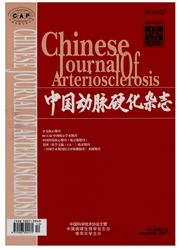

 中文摘要:
中文摘要:
目的 通过化学和免疫学双重偶联,构建支架结合基因的血管内基因转运体系,评价其可行性及效果.方法 采用双官能偶联剂N-琥珀酰亚胺基3-(2-吡啶二硫基)丙酸酯将特异性抗腺病毒六位体(Fab)2'片段以化学键结合在胶原涂层的支架上,编码绿色荧光蛋白的腺病毒作为报告基因载体,通过免疫作用连接在结合了(Fab)2'的支架上,分别在体外和体内实验中验证其效果.结果 体外实验结果发现,实验组支架胶原涂层的表面有大量编码绿色荧光蛋白的腺病毒转染的细胞浸润生长,与支架接触的培养皿表面生长的细胞转染率高达92.8%±2.5%,而未与支架直接接触的周边细胞几乎没有被转染.转染率与编码绿色荧光蛋白的腺病毒的反应用量在107~1010病毒粒子范围内呈直线关系,有明显的量效对应性.猪冠状动脉支架植入实验中,回收的支架上和与支架接触的血管组织内有广泛的绿色荧光蛋白表达,血管组织中总的转染率占细胞总数的5.9%±1.1%,转染细胞主要集中在新生内膜(>17%)和中膜(>7%),外膜几乎没有转染.远隔器官(肺、肝、肾)和下游冠状动脉样本未见绿色荧光蛋白DNA表达.结论 通过化学偶联的方法在支架上固定抗腺病毒特异性抗体结合腺病毒的基因转运体系可局部靶向、高效地进行血管内介入性基因转运.
 英文摘要:
英文摘要:
Aim To evaluate the possibility and efficiency of stent-based gene delivery system using antibody-tethered adenoviral vector. Methods Stents were formulated with a collagen coating. An anti-adenoviral monoclonal antibodies' ( Fab)2' were eovalendy bound to the collagen surface by reactions with a bi-fimetional cross linker N-suceinimidyl 3- (2-pyridyldithio) propionate(SPDP). These antibodies enabled tethering of replication defective adenovirus encoding green fluorescent protein (Ad-GFP). The fimetion of this novel stentt based on gene delivery system was evaluated in cell culture and in animal test. Results Gene delivery from stents carrying antibody-tethered Ad-GFP demonstrated efficient, site-specific and highly localized Ad-GFP transduefion in cell culture (transduefion efficiency was 92.8 %±2.5 % vs about 10 % in control group). In pig coronary artery stent deployment studies, GYP-positive cells were only observed in the site that direct contact with the antibody-tethered Ad-GFP stentt. Most of these cells were neointimal smooth muscle cells (transduction efficiency was more than 17 % of total cells in neointimal region and the average transduetion efficiency was 5.9%±1.1% for the whole section) . No distal spread of vector was detectable by polymerase chain reaction. Conclusion Gene delivery system based on antibody immobilized coronary stents provided localized and highly efficient gene delivery for intravascular site-specific gene therapy.
 同期刊论文项目
同期刊论文项目
 同项目期刊论文
同项目期刊论文
 期刊信息
期刊信息
